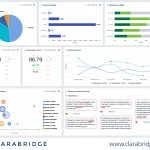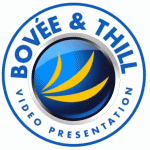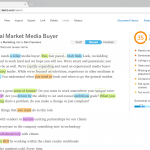When students get a new assignment, they can be tempted to either dive in immediately so they don’t get into a schedule crunch later or put it off until the last minute—when they will definitely be in a schedule crunch.
Not surprisingly, the do-it-later approach isn’t always a successful way to work. Writing under a tight deadline can sometimes be invigorating, and time limits can help the mind stay focused, but mostly it’s just stressful and exhausting. Plus, there’s the potential problem of getting bogged down in complex issues at the last minute and not having enough time left to think through them or do additional research.
Somewhat more surprisingly, the do-it-right-now approach isn’t always the most productive way to write, either. When you sit down and command yourself to write something now, the mind has a funny way of rebelling and giving you nothing but a blank stare. Instead of figuring out what you need to say, you’ll start worrying about how to say it, and your inner editor will get in the way with criticism and self-doubt.
Encourage your students to try this modified approach instead. As soon as they get an assignment, dig into it but tell themselves they don’t need to do any writing right now. Just explore the topic, do some research, and start to fill their minds with nuggets of information—without worrying about how they’re going to say anything yet. Let these thoughts rumble around while they go off and do other things. Their minds will keep busy in the background, searching for connections between the bits of information they have collected, trying out ideas for organizing the piece, and generating useful phrases and other bits of text. The piece will gradually take shape somewhere between their conscious and subconscious mind before they begin to write, and when they do sit down to write, the words should flow faster and easier than trying to force them on command.
Self-Coaching Ideas for Your Students
- Do you ever find yourself in a panic when you try to start a writing project? If so, don’t get down on yourself; this can happen to everybody, including professional writers who have been honing their craft for decades. Try this trick: Tell yourself you need to write just one sentence. As you fine-tune that sentence, you’ll probably feel yourself settling into a groove, and the rest of the work will go easier from there.
- If you’re in the habit of putting writing projects off to the last minute, what are some changes you could make to get yourself into a more-controlled and less-stressful mode of work?
Photo: Yudis Asnar

 No one welcomes the prospect of a difficult conversation, whether it’s with a professor, a parent, a spouse, a teammate, or anyone else. Remind students that while they may not be able to change the information that needs to be shared, they can take steps to make the conversation itself less upsetting—and to keep emotions from spiraling out of control. Encourage students to make these conversations as trauma-free as possible with these tactics:
No one welcomes the prospect of a difficult conversation, whether it’s with a professor, a parent, a spouse, a teammate, or anyone else. Remind students that while they may not be able to change the information that needs to be shared, they can take steps to make the conversation itself less upsetting—and to keep emotions from spiraling out of control. Encourage students to make these conversations as trauma-free as possible with these tactics: You’ve probably experienced both these frustrations with search engines: You’re not quite sure which terms to use, so you poke around hoping you’ll find something relevant, or you get lots of irrelevant results that happen to include your search terms but have nothing to do with what you are looking for.
You’ve probably experienced both these frustrations with search engines: You’re not quite sure which terms to use, so you poke around hoping you’ll find something relevant, or you get lots of irrelevant results that happen to include your search terms but have nothing to do with what you are looking for.

